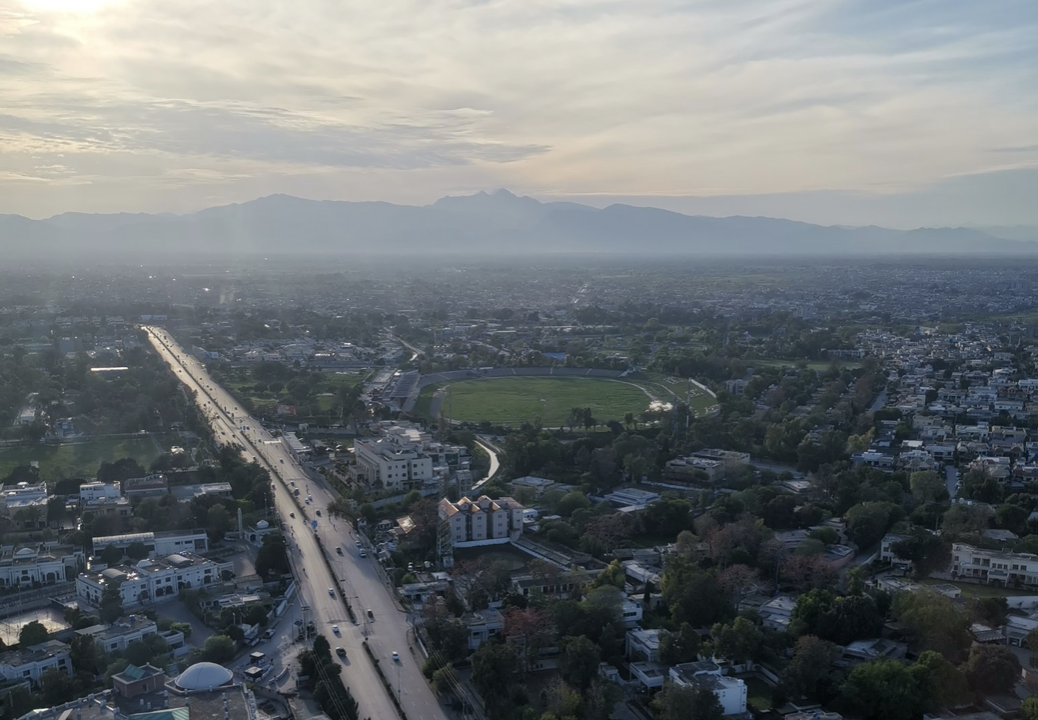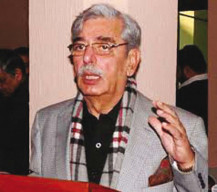
Once known as the land of springs, today the historic city of Peshawar appears to be suffering from an acute shortage of clean drinking water.
The growing water scarcity, which is attributed to the city’s ballooning population, has left its residents competing for access to the most basic of resources. Meanwhile, uncontrolled installation of tube-wells which continue to deplete groundwater sources, seem to be putting the region at the risk of a permanent change in the water-table.
Despite said risk, prolonged inattention towards an alternative water source however, has left groundwater to supply most of the city’s hydrologic needs. Ancient pipelines laid during the British Raj to hydrate Peshawar with water siphoned from the Kabul River, are too a thing of the past. A feasibility report costing Rs5 billion to bring in clean drinking water to Peshawar from Warsak Dam, located a few kilometers away from the city, was once also in consideration. But it was lost in the files, which eventually resulted in the cost of the project multiplying beyond anticipation. Yet it is said that in actuality, there had never been any consideration of an alternative water source to hydrate the city of more than two million.
“There was a time the water here was so crystal clear that Peshawar came to be known as the home of springs and waterways. There were clean water wells everywhere including Qissa Khawani Bazaar, Sarad Chah Gate, Gora Bazaar and Bazaar Kalam. The residents drank directly from these wells too, it was all very clean,” recalled Ibrahim Zia, 75, a resident of Lahore Gate in the inner city of Peshawar. “They were our primary source of water. But now sadly, after sixty years all our wells have gone dry and closed down and our people are struggling for access to clean drinking water,” he lamented.
Out of the many wells in the historic city of Peshawar, Chah Shahbaz near Kohati Gate was known to be the largest. According to local recollections, it was so huge that stairs needed to be built inside the well, so it could be cleaned before winters every year. “The gargantuan well is useless now. There is a cloth market which now sits over it,” said an area resident.
Other defunct wells in the city include Thandi Khoi Sarki Gate, Kala Khoi near Yakatut Gate, wells of Sethi Karim Bakash in the inner city and those located within Wazir Bagh, all of which have dried up with time. The parched ground of Kala Khoi, which was once known for the quality of its water, serves now as an evening haunt for vicinity’s elderly. They sit atop and enjoy their evening tea.
The Khyber Pakhtunkhwa Drinking Water Policy was although formulated in 2016, it has done little to ameliorate the city’s growing water crisis.
The uncontrolled and often politicised installation of tube-wells has led to a decline in the region’s groundwater bank, which risks an irrecoverable impact on the water-table. As of now, inner-city areas of Ganj, Dilla Zak Road, Nothia and some parts of Hayatabad, have already experienced a 50 to 60 feet fall in the water-table in the last few years. While, more severe reductions in groundwater reserves are feared to come in the near future.
The provincial government has recently passed a bill in the Assembly for Water Reverse Regulatory Authority for the distribution and protection of water. Under the bill, a fine of up to Rs 500,000 and imprisonment for three months is to be imposed on anyone exploiting water resources. However, according to Zia, a city resident, most such crimes against water security tend to go unquestioned by and large. “There is no check and balance of water usage at the city’s service stations. Every house here has a boring for drawing water out of the ground and there is no one to ask about it,” commented city resident Zia.
On the other hand, speaking to The Express Tribune about the city’s water crisis, Peshawar Water and Sanitation Services Spokesperson Muhammad Hassan, said that a comprehensive has been plan being drawn up to address the city’s water wastage. “As per plan, so far, we have installed some 160 water meters across Peshawar’s service stations while more are to be installed in the future. The meters will allow us to monitor water wastage and take relevant steps to ameliorate it,” said Hassan. “Other than that, we have also installed new pipelines in 60 to 70 per cent of areas across Peshawar’s three zones. Whereas, under the Water Act, boring also requires NOCs for which regular charges are levied,” he added.
According to Shiraz Paracha, a geographical expert from University of Peshawar, water scarcity is likely to rise as a global issue by year 2050. “The 20th century saw oil wars, water wars are going to be next. As a country already flailing near water depletion, we need to act accordingly and with great urgency. The government should immediately set up an authority comprising the Department of Agriculture, Environment, Welfare and Local Government, headed by the Chief Minister. In unison, they need to hold monthly meetings to so that K-P is able to better address the water challenges it is faced with,” he asserted.
Published in The Express Tribune, October 6th, 2020.

1672385156-0/Andrew-Tate-(1)1672385156-0-405x300.webp)
















COMMENTS
Comments are moderated and generally will be posted if they are on-topic and not abusive.
For more information, please see our Comments FAQ